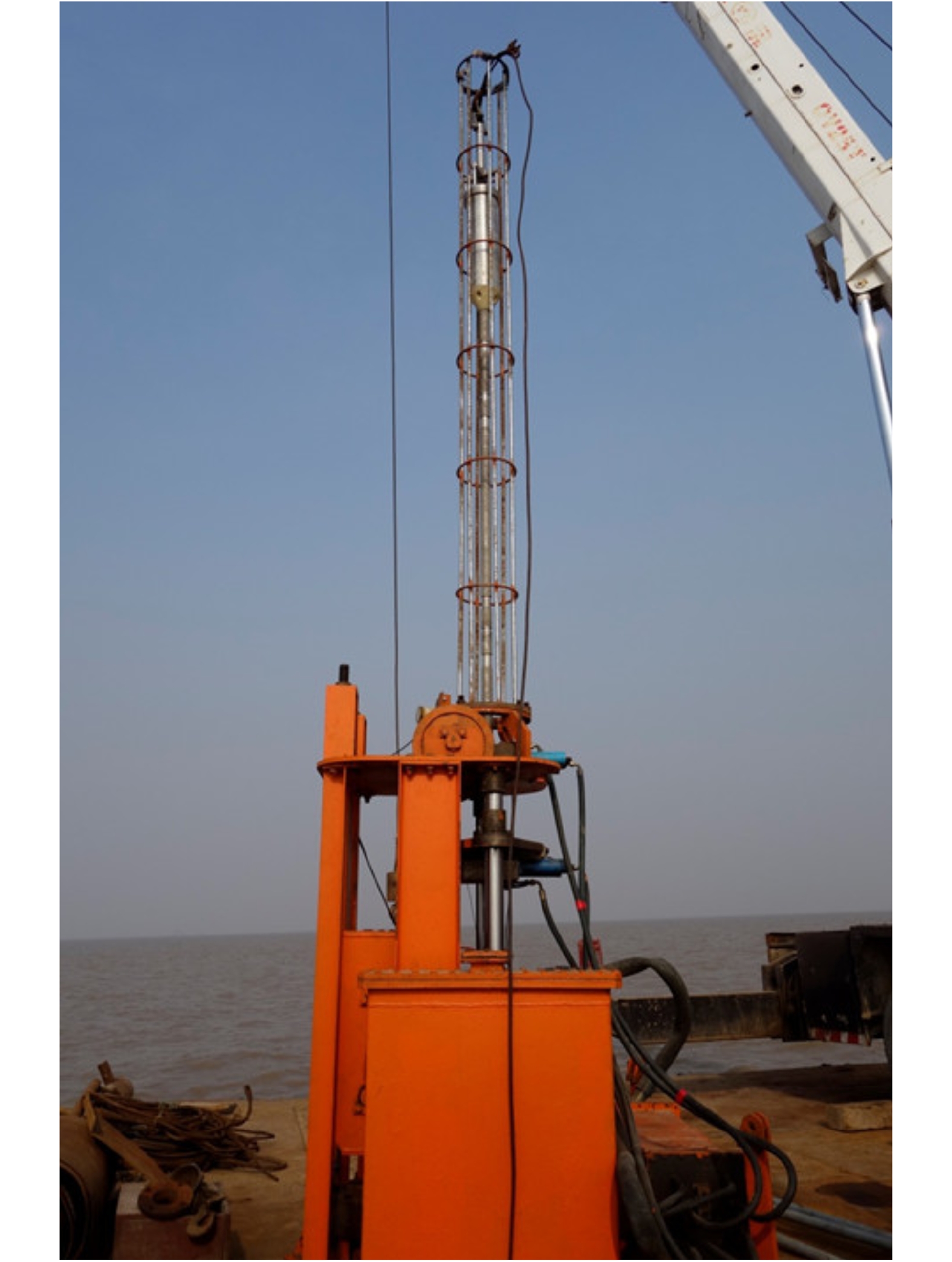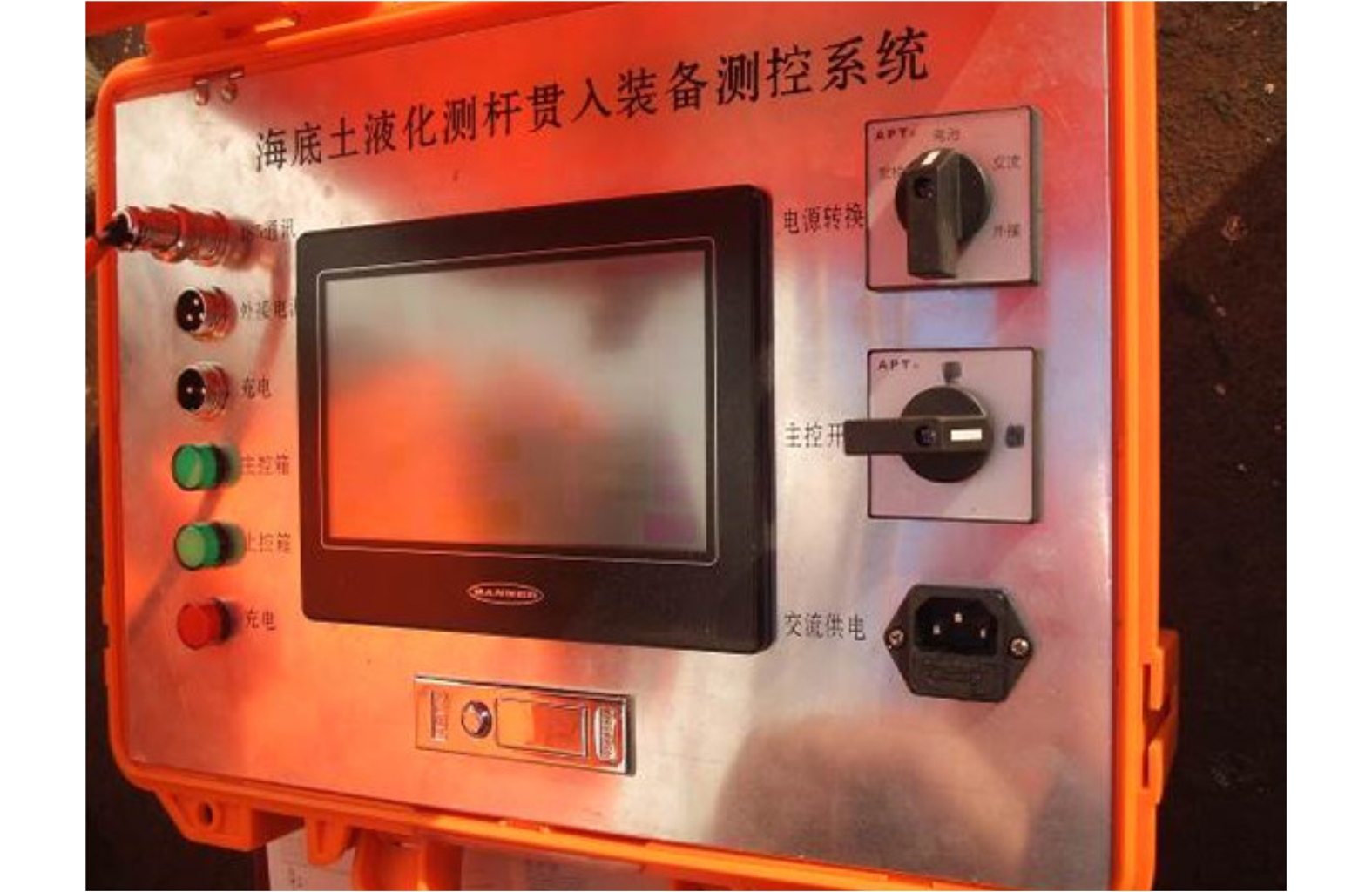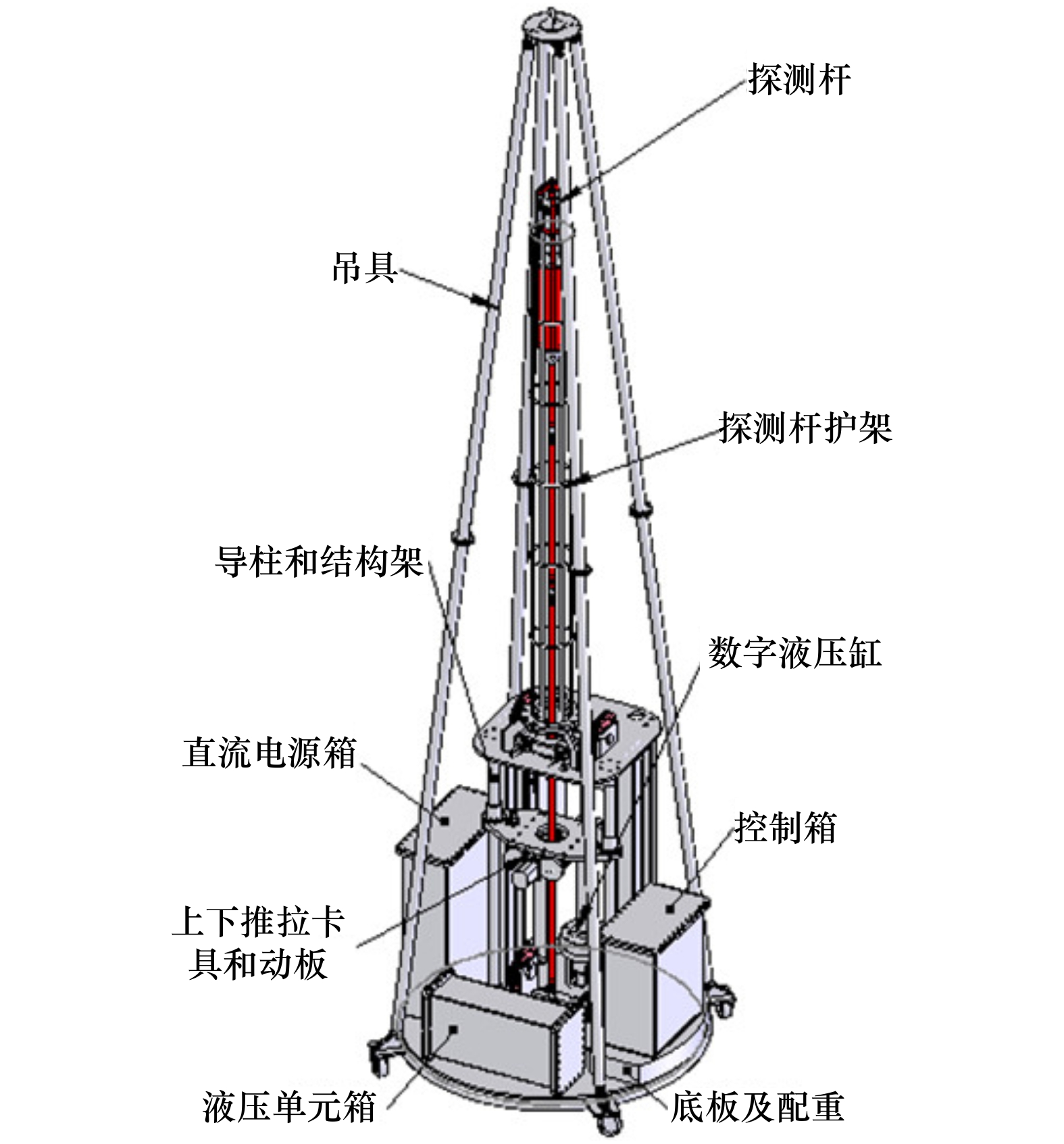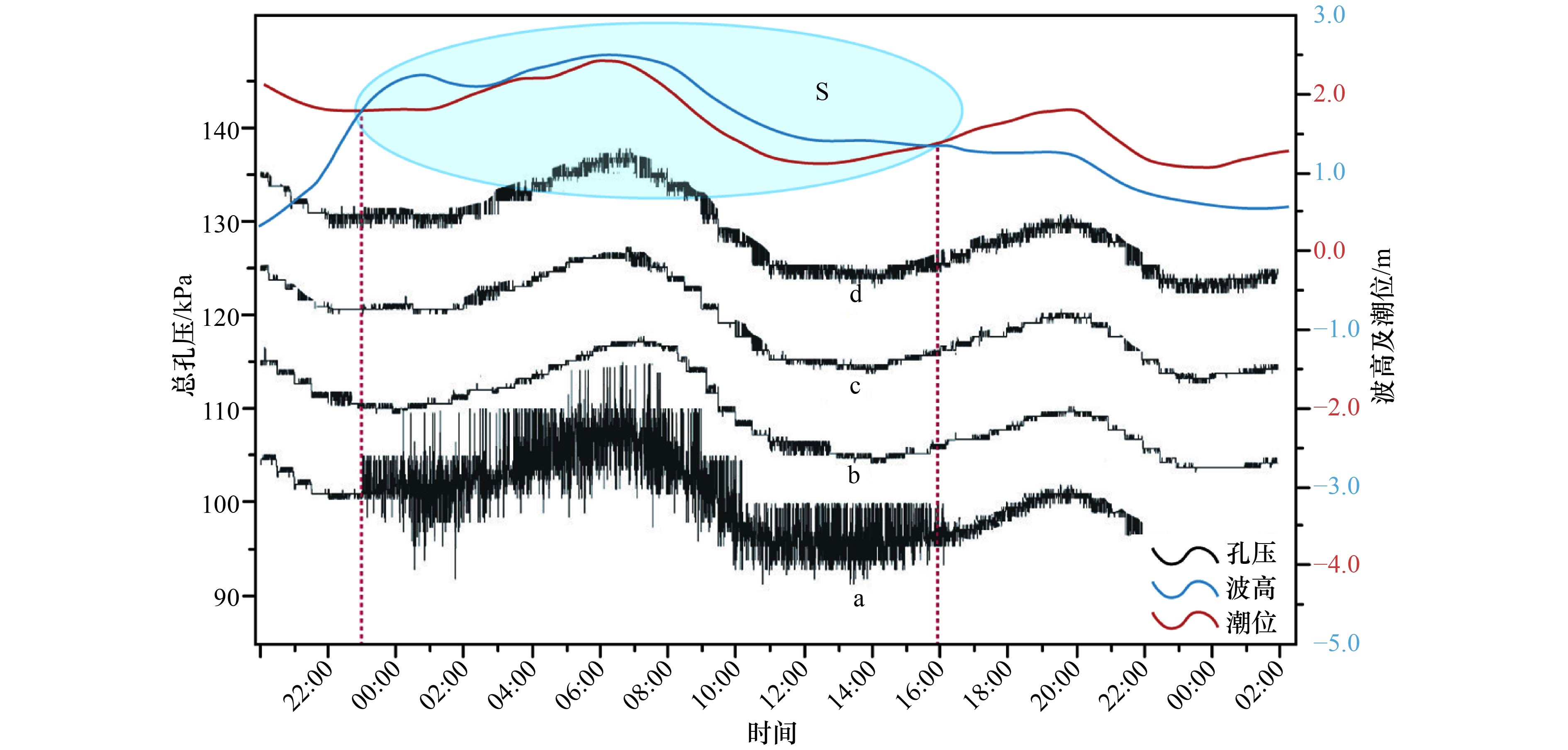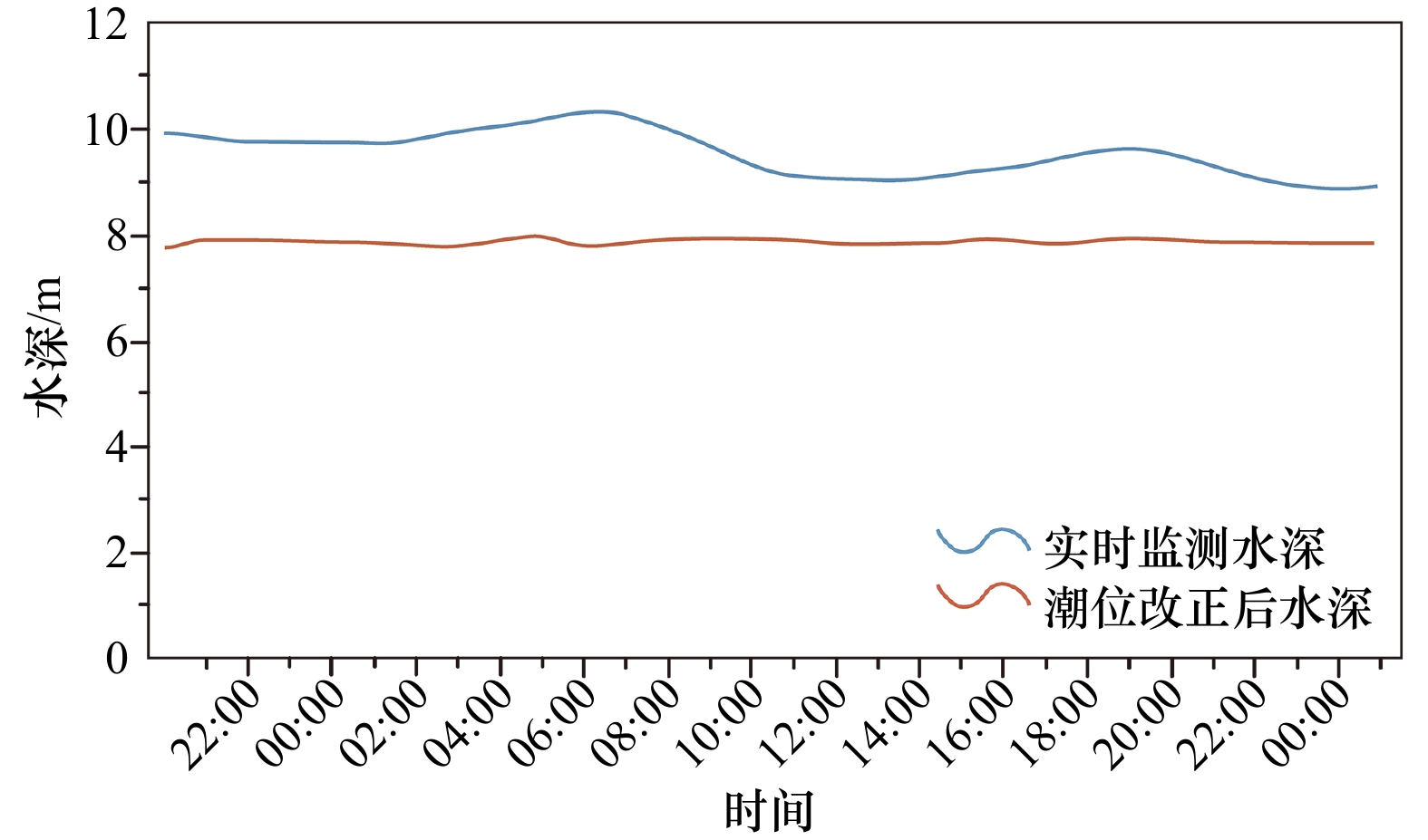In site monitoring of wave-induced pore pressure of silt in Chengdao sea area of Yellow River Estuary
-
摘要: 波浪会对海床产生反复的作用力,由此引起的土体颗粒间孔隙水压力变化是造成土体液化的主要原因。使用自行研发的孔压监测设备,对黄河口埕岛海域易液化区海底孔压进行了长时间、高精度的观测,并对孔隙水压力、波高以及潮位间的关系进行分析。监测结果显示,本次监测条件下波浪最大作用深度介于0.5~1.5 m之间,超过该作用深度后孔压无明显变化。土体内部孔隙水压力的变化主要由潮位和波高决定,潮位的作用可使孔压缓慢平滑的变化且对超孔压无影响;波高的作用可使孔压快速、剧烈地振荡并导致超孔压的出现。Abstract: Variation of pore pressure between soil particles, which caused by the cyclic loading from waves to seabed, is the main reason for soil liquefaction. By using a self-designed pore pressure monitoring equipment, we monitored pore pressure with a long-period, high-precision way in the easy-liquefied zone in Chengdao sea area of Yellow River Estuary. The monitoring results show that the maximum wave-affected depth is between 0.5 m to 1.5 m and no obvious pore pressure response in the deeper sediment during this period. Pore pressure variation in soil is mainly determined by tide level and wave height. Tide level changes can result in smooth change in pore pressure but can not cause the emergence of excess pore pressure while wave height changes can result in severe oscillation in pore pressure and lead to the appearance of excess pore pressure.
-
图 6 总孔隙水压力、波高及潮位随时间的变化
a–d曲线分别代表海床以下0.5 m、1.5 m、2.5 m和3.5 m位置孔压变化,S表示有明显孔压响应条件的区域
Fig. 6 Total pore pressure, wave height and tide level vary with time
a–d represent pore pressure variation in 0.5 m、1.5 m、2.5 m and 3.5 m depth under the seabed. S represents the area that pore pressure response obviously
表 1 参数统计结果
Tab. 1 Statistics result of parameters
黏粒含量/% 含水量/% 容重/kN·m−3 孔隙比 平均 10.94 25.74 19.72 15.70 数据个数 108 156 151 147 标准差 4.01 3.15 0.55 0.81 液限/% 塑限/% 黏聚力/kPa 内摩擦角/(°) 平均 0.71 27.75 20.00 16.11 数据个数 147 152 152 131 标准差 0.08 2.97 2.15 5.06 -
[1] Putnam A P J. Loss of wave energy due to percolation in a permeable sea bottom[J]. Transactions, American Geophysical Union, 1949, 30(3): 349−356. doi: 10.1029/TR030i003p00349 [2] Sleath J F A. Wave induced pressures in beds of sand[J]. Journal of the Hydraulics Division, 1970, 96: 367−378. [3] Moshagen H, Torum A. Wave induced pressures in permeable seabeds[J]. Journal of the Waterways, Harbors and Coastal Engineering Division, 2010, 101(1): 49−57. [4] Yamamoto T, Koning H L, Sellmeijer H, et al. On the response of a poro-elastic bed to water waves[J]. Journal of Fluid Mechanics, 1978, 87: 193−206. doi: 10.1017/S0022112078003006 [5] Biot M A. General theory of three-dimensional consolidation[J]. Journal of Applied Physics, 1941, 12(2): 155−164. doi: 10.1063/1.1712886 [6] Thomas S D. A finite element model for the analysis of wave induced stresses, displacements and pore pressure in an unsaturated seabed Ⅱ:model verification[J]. Computers and Geotechnics, 1995, 17(1): 107−132. [7] Jeng D S, Seymour B R, Li J. A new approximation for pore pressure accumulation in marine sediment due to water waves[J]. International Journal for Numerical and Analytical Methods in Geomechanics, 2007, 31(1): 53−69. doi: 10.1002/(ISSN)1096-9853 [8] Zhang J S, Zhang Y, Zhang C, et al. Numerical modeling of seabed response to combined wave-current loading[J]. Journal of Offshore Mechanics and Arctic Engineering, 2013, 135(3): 031102. doi: 10.1115/1.4023203 [9] Liao C C, Jeng D S, Zhang L L. An analytical approximation for dynamic soil response of a porous seabed due to combined wave and current loading[J]. Journal of Coastal Research, 2015, 31(5): 1120−1128. [10] Liu B, Jeng D S, Ye G L, et al. Laboratory study for pore pressures in sandy deposit under wave loading[J]. Ocean Engineering, 2015, 106: 207−219. doi: 10.1016/j.oceaneng.2015.06.029 [11] Ye Jianhong, Jeng D S. Response of porous seabed to nature loadings: waves and currents[J]. Journal of Engineering Mechanics, 2012, 138(6): 601−613. doi: 10.1061/(ASCE)EM.1943-7889.0000356 [12] Ye Jianhong, Wang Gang. Numerical simulation of the seismic liquefaction mechanism in an offshore loosely deposited seabed[J]. Bulletin of Engineering Geology and the Environment, 2016, 73(3): 1183−1197. [13] Ye Jianhong, Huang Duruo, Wang Gang. Nonlinear dynamic simulation of offshore breakwater on sloping liquefied seabed[J]. Bulletin of Engineering Geology and the Environment, 2016, 73(3): 1215−1225. [14] Ye Jianhong, Jeng D S, Chan A H C, et al. 3D integrated numerical model for fluid-structures-seabed interaction (FSSI): elastic dense seabed foundation[J]. Ocean Engineering, 2016, 115: 107−122. doi: 10.1016/j.oceaneng.2016.01.003 [15] Tzang S Y. Water wave-induced soil fluidization in a cohesionless fine-grained seabed[D]. Berkeley: University of California, 1992. [16] Zen K, Yamazaki H. Mechanism of wave-induced liquefaction and densification in seabed[J]. Soils and Foundations, 1990, 30(4): 90−104. [17] 刘红军, 刘莹, 张民生. 波浪作用下黄河口粉土液化与振荡层形成试验研究[J]. 中国海洋大学学报, 2009, 39(5): 1013−1018.Liu Hongjun, Liu Ying, Zhang Minsheng. Study on liquefaction of silty soil and the development of surging layer under wave actions at Yellow River estuary[J]. Periodical of Ocean University of China, 2009, 39(5): 1013−1018. [18] Xu Guohui, Sun Yongfu, Wang Xin, et al. Wave-induced shallow slides and their features on the subaqueous Yellow River delta[J]. Canadian Geotechnical Journal, 2009, 46(12): 1406−1417. [19] 许国辉, 贾永刚, 郑建国, 等. 黄河水下三角洲塌陷凹坑构造形成的水槽试验研究[J]. 海洋地质与第四纪地质, 2004, 24(3): 37−40.Xu Guohui, Jia Yonggang, Zheng Jianguo, et al. Flume test formed by collapse in the Yellow River subaqueous delta[J]. Marine Geology & Quaternary Geology, 2004, 24(3): 37−40. [20] Bennett R H. Pore-water pressure measurements: Mississippi delta submarine sediments[J]. Marine Geotechnology, 1977, 2(1/4): 177−189. doi: 10.1080/10641198009379819 [21] Okusa S, Uchida A. Pore-water pressure change in submarine sediments due to waves[J]. Marine Geotechnology, 1980, 4(2): 145−161. doi: 10.3208/sandf1972.31.4_161 [22] Zen K, Yamazaki H. Field observation and analysis of wave-induced liquefaction in seabed[J]. Soils and Foundations, 1991, 31(4): 161−179. -





 下载:
下载:

